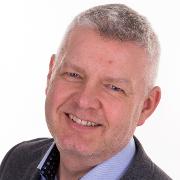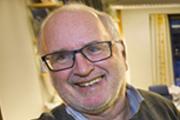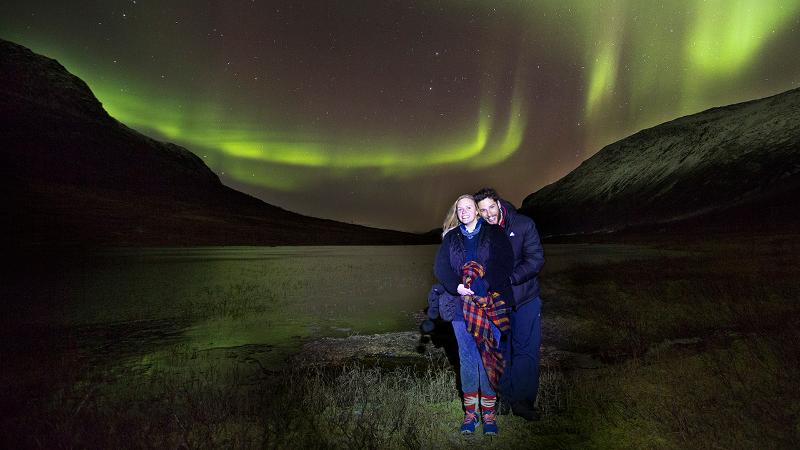
After travelling more than 13 000 km, from Buenos Aires to Tromsø, Juan Manuel Balsamo and Lara Serreri Green saw the green dream unfold itself above them in the sky. When the couple first met a year earlier, in the Argentinian capital, they discussed their dreams for the future. The one they shared in common was seeing the northern lights.
“I saw it once in a Japanese cartoon and was completely captivated. I wanted to see it with my own eyes,” said Green.
Her boyfriend was inspired to travel to see the northern lights from a picture posted on social media. A friend had travelled across the world and posted a picture of himself in front of the northern lights. “Fantástico,” thought the Argentinian. He just had to experience it. Now he stands there with his arms around his girlfriend, both wiping their tears while discussing the illusiveness of what they see.
It is not surprizing that the South-American couple chose to fulfil their dreams in Norway, according to the scientists at UiT. Arvid Viken, professor at the Institute for Sociology, Political Science and Society Development, has looked into why northern lights tourists choose Tromsø before Alta -The City of Northern Lights. He also looked into what actually happened when northern lights went from being for those of special interest, to being a world class tourist attraction.
“For the tourist industry in Northern Norway the winter has traditionally been a period spent waiting for summer. Although it has been centuries since the first foreigner travelled north to see the magical lights, it is only in the last decade we can speak of northern lights tourism,” says Professor Viken.
The first descriptions of northern lights are more than 4 600 years old. Since then it has been a breeding ground for myth, horror stories and folklore. Three hundred years ago astounding northern lights displayed themselves across Europa, initiating speculation as to what this might be.
“They linked the natural phenomenon to the devine and superstition, and wondered if it was something chemical or electric,” writes UiT professor Robert Marc Friedman in the article “Making Sense of the Aurora”. One hundred years later five young scientists from France and Sweden arrived in Alta. During their stay in the winter of 1838 they made many observations of the northern lights. Or “Aurora Borealis” as the lights were named in honour of the Goddess of Dawn in Roman mythology, by the scientist Galileo Galilei’s men in 1619.

While Tromsø’s famous landmark is the Arctic Cathedral, Alta has built the Northern Lights Cathedral, Hotel Northern Lights and Hotel Aurora Borealis.
“In spite of this Alta has lost the competition for the large number of northern lights tourists in Norway,” concludes Arvid Viken.
While the Finns made large amounts of money on Santa, the winter season in Northern Norway was about losing as little money as possible. Hurtigruta was sailing without passengers, and the tourist industry on land was trying to keep the wheels spinning by adapting to the seminar and conference market. The northern lights were just a bonus for other activities. No one believed it could be a product in and of itself. There were scattered attempts for winter tourism in Alta in the 80s, 90s and early 2000, but those who tried failed. Their product did not reach the market, claim the UiT scientists.
It was the Swedes who first saw the potential in Tromsø. During the 90s they brought in Japanese tourists, however it did not bring in enough money so that others would invest solely in the northern lights industry. We then saw the arrival of digital cameras, Facebook, Youtube and Tripadvisor. It became easier to photograph oneself in front of the northern lights. In addition, social media made it possible to spread the images: suddenly people could see with their own eyes what their friends experienced. In Alta, in Tromsø and on board Hurtigruta they saw the northern lights at the same time. Hurtigruta quickly moved to develop the adventure of “Hunting the Polar Lights”.
Alta was previously the capital for northern lights research. In 1898 Kristian Birkeland established a northern lights observatory on a mountaintop outside the centre of Alta and discovered what is our present understanding of northern lights. Alta’s proud history is the reason why the city calls itself the City of Northern Lights.
“Earlier the tourist industry of Northern Norway based itself on showing tourists a raw and untouched wilderness, but now the industry started to develop northern lights adventures,” says Bente Heimtun, Associate professor at the Institute of Tourism and Northern Studies at UiT.
In Alta they could not agree on a common strategy. Meanwhile, Hurtigruta was determined to capture the British market. In Tromsø the umbrella organization “Destination Tromsø” created a crucial booking system. Clients could book northern lights trips online, and there were many adventures to choose from.
Then BBC journalist, Joanna Lumley, visited Tromsø. Miss Aurora danced before her in all her glory, and millions of TV-viewers could see a wonderful documentary on the northern lights. This was great publicity for Tromsø. Because of Hurtigruta’s commitment to the British market, Norwegian Airlines opened direct flights from London to Tromsø, and while they could still not agree on a common strategy in Alta, northern lights tourism exploded in Tromsø.
“Tromsø can thank Hurtigruta for much of their success. They made strategies for investments in the northern lights tourist industry. Tromsø also had a great advantage compared to Alta due to its size. As a large Northern Norwegian city Tromsø offered more to the urban tourists with its restaurants, museums and city life,” says Arvid Viken.


In 2005 five businesses offered northern lights adventures in Tromsø. Now there are more than sixty busnisses that provide this service. While there were 3 987 foreign visitors in Alta in 2012, there were 88 621 in Tromsø. Since then the difference in tourist number is even greater.
“Although they started at the same level with northern lights tourism in Alta and Tromsø, size has been a determining factor in the struggle for tourists,” says Bente Heimtun.
A thriving community of photographers is another reason why Tromsø today can call itself the Norwegian Capital of Northern Lights. While there are no photographers systematically posting photos on Facebook in Alta, the Tromsø based northern light photographer Christian Salomonsen has nearly 350 000 followers who register every time he posts a picture of the northern lights from Tromsø. When CNN interviewed Solomonsen live about northern lights, Tromsø and his photographs, there were more that 200 million viewers.
“I have no doubt that Facebook has been of great significance to Tromsø. With the fantastic pictures of northern lights, it seems as if the world suddenly discovered a natural phenomenon that has always been present,” says professor Viken.
Northern lights photographer Truls Tiller, who frequently receives questions via social media regarding Tromsø and the northern lights, confirms Viken’s point of view. On one of his many northern lights trips, he met some Brazilians who recognized him from his Facebook profile picture. They had followed Tiller’s northern lights photos for some time and came to Tromsø because the photos of the area looked so inviting.
“A lot of people think tourists choose Tromsø before Alta because of availability and more frequent flights. I believe this is wrong. If there is enough interest, there will be flights. I think social media has been a determining factor,” says professor Viken. He refers to the fact that if 100 000 winter visitors from Tromsø post a message on social media, each read by ten friends, it reaches over I million people. If 4000 visitors to Alta do the same, the potential is far less.
“Will you please take a picture of us under the northern lights?”
While they are wiping their tears, laughing and staring at the sky, the Argentinian couple would like a romantic picture of themselves under Auroras green fluttering skirts. Juan Manuel Balsamo and Lara Serreri Green smile, embrace and kiss while whispering “fantástico”, “increíble”. Fantastic. Incredible.
A few hours later, 13 000 km away, beautiful pictures appear on the screens of 1 400 Facebook friends: They receive likes and comments. “Increíble”! Amazing!